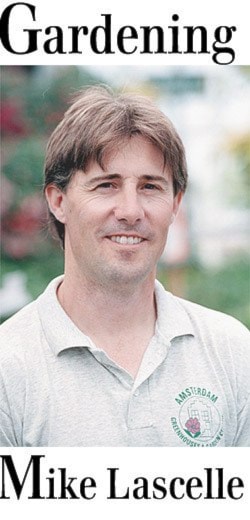You know the NHL lockout lasted a bit too long when you get Christmas cards from your relatives in Winnipeg mockingly congratulating you on the Canucks perfect record thus far, and unfortunately winning the Stanley Cup in a shortened season is almost a second-rate affair.
This same principle applies to tardy gardeners or those quasi green-thumbs who tend to do everything last minute.
Beautiful landscapes and bountiful vegetable gardens aren't a chance happening or simply a matter of good weather – they are the result of careful planning, strategic planting and a lot of hard work.
So I am going to start this year right by giving you the best piece of advice I can offer: plan the entire season in advance.
This is particularly pertinent when it comes to edibles, as far too many of you are looking for winter vegetable starts in winter (I had someone looking for kale just the other day) instead of mid-July to early August, when your kale, parsnips, cabbage and Swiss chard should be sown or planted for winter use.
The easy way to get your head around this is to simply go to your local garden center and pick-up a free copy of the West Coast Seeds catalogue (www.westcoastseeds.com). This company has done extensive research and plant trials in the Fraser Valley and offers only the best varieties for our coastal climate, along with detailed planting information (when to plant, harvest).
Then there's the dizzying array of new plant introductions that fill fattened gardening magazines and our heads with the promise of beautiful trees, shrubs and perennials.
The truth of the matter is that for every 10 new introductions, only one of them is going to become a landscape standard and quite often we overlook the hundreds of reliable ornamentals already in use.
Many of these have been available for decades now, and with that in mind, I am in the process of compiling a comprehensive plant website (www.mikesgardentop5plants.wordpress.com), where you can peruse these at your leisure – it currently holds more than 2,000 selections.
That's not to say that we should be overlooking this year's new introductions, particularly in the hellebore department. Of special note is helleborus 'Anna's Red,' which combines beautifully marbled foliage (like 'Winter Moonbeam') with deep burgundy-red flowers – something entirely new in hellebores.
Also, helleborus x ericsmithii 'Pirouette' (creamy-white flowers with pink highlights on arching stems that darken with age) and 'Angel Glow' are worth looking for.
The latter is a more subtle version of 'Pink Frost,' with light pink blooms that fade with green highlights, nicely contrasted by bluish-green foliage.
Last on my list of new introductions is a stunning mophead hydrangea (H. macrophylla) called PISTACHIO (syn. 'Horwack'), which features unheard of variable blooms of red/green or hot pink/lavender/green depending on the pH and the season.
It is part of the Forever and Ever series, which is compact (90- 120-centimetre high) and blooms on both old and new wood, so you get an impressive secondary display in the fall.
It is also time to clean (using a 10 per cent bleach solution), sharpen and oil your secateurs, loppers and hand saws as the winter pruning season is upon us.
Try to do your pruning in milder weather as the wood is harder in freezing temperatures and it is quite difficult to get a clean cut.
Also, never take more than 20 per cent of the overall structure as this will only invigorate spring growth and make more work for you – and don't forget to dormant spray your roses and fruit trees.
Mike Lascelle is a local nursery manager and gardening author. Email him at hebe_acer@hotmail.com.
